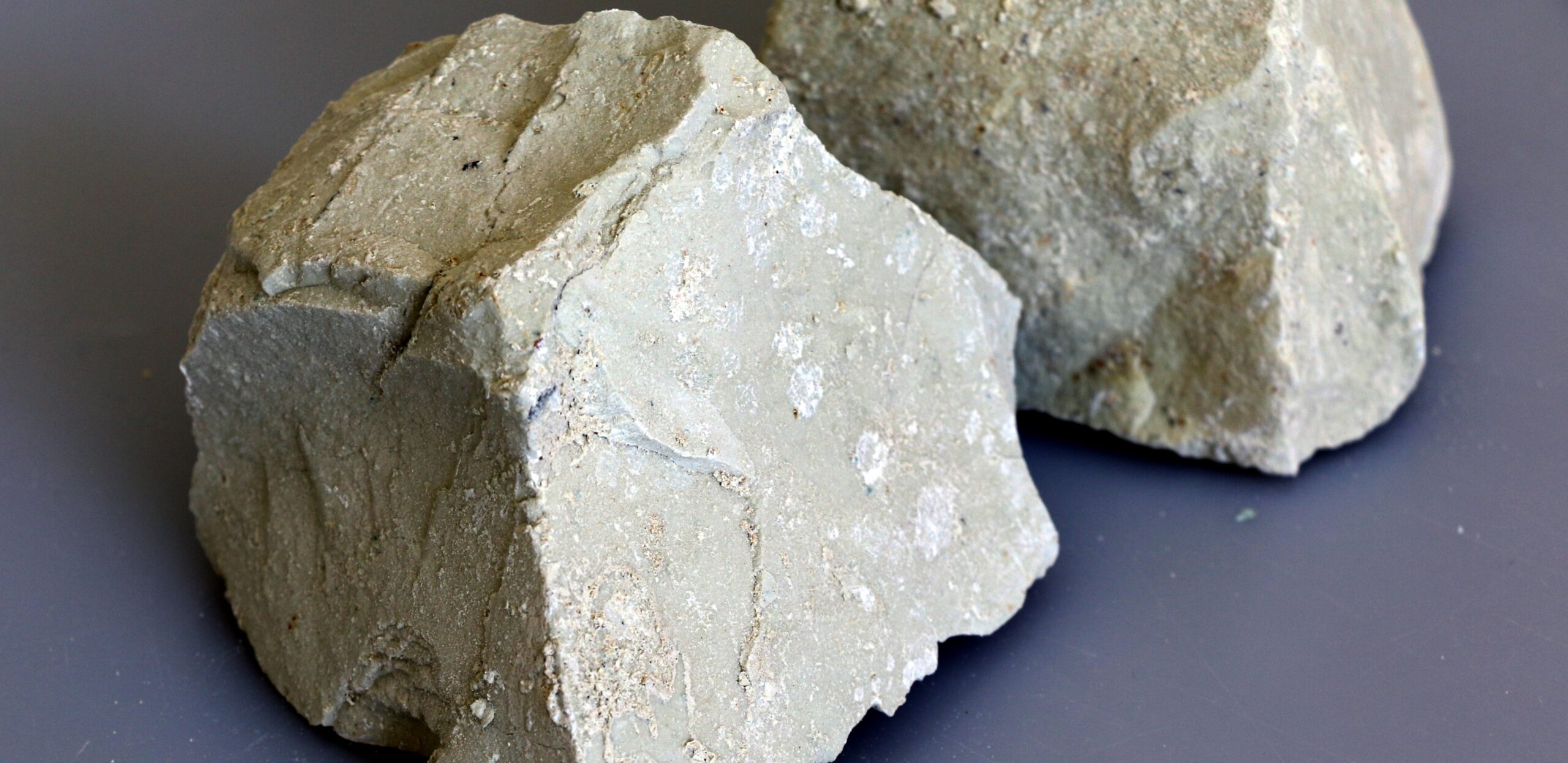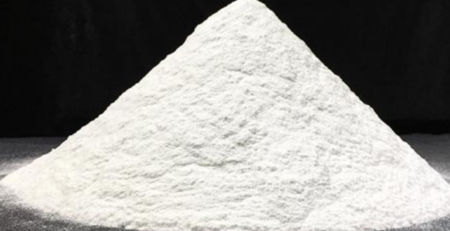15May
CALL US NOW

More than 150 zeolites have been synthesized. Some of the more common synthetic zeolites are zeolites A, X, Y, and ZMS-5. Natural and synthetic zeolites are used commercially because of their unique adsorption, ion exchange, molecular sieve, and catalytic properties.
Commercial zeolite deposits in the United States are associated with the alteration of volcanic tuffs in saline, alkaline lake deposits, and open hydrologic systems. The deposits are in Arizona, California, Idaho, Nevada, New Mexico, Oregon, Texas, Utah, and Wyoming. The major components of these deposits are chabazite, clinoptilolite, mordenite, and phillipsite. Erionite, orthoclase, and plagioclase feldspar, montmorillonite, opal, quartz, and volcanic glass may be present in some deposits.
Conventional mining techniques were used to mine natural zeolites. The overburden was removed to allow access to the ore and the ore was stripped for processing using front-end loaders or tractors equipped with ripper blades. Fractured ore was dried and then crushed using either jaw crushers or roller mills. The crushed ore was packaged directly for shipping or was screened to remove fine material when a granular product was required.
Seven companies mined or sold natural zeolites in the United States in 1995. Clinoptilolite was mined and/or processed in California, Nevada, New Mexico, Oregon, and Texas; chabazite was mined in Arizona. Total domestic production was 46,800 metric tons.
Approximately 34,000 tons of natural zeolites were sold in 1995, a 4% decrease from that of 1994. The various end uses for natural zeolites included pet litter, animal feed, odor control, fertilizer carrier, oil absorbent, soil stabilization, aquaculture, desiccant, wastewater clean-up, catalysts, gas absorbents, and water purification applications, in decreasing order of consumption. Pet litter and animal feed applications were the two largest markets for natural zeolites. As in previous years, over 50% of the natural zeolite was used in pet litters. Consumption increased for aquaculture, catalyst, fertilizer, gas absorbent, odor control, water purification, and wastewater clean-up applications. In all cases except for odor-control applications, the increase in consumption was less than 200 tons. In the case of odor-control applications, consumption doubled. Consumption declined for animal feed, oil absorbent, and pet litter applications. The largest decrease was for animal feed applications, where sales declined 7%. Sales to the oil absorbent and pet litter applications declined 5% and 2%, respectively.
Prices for natural zeolites vary with zeolite content and processing. Prices could be as per industrial or agricultural applications and granular, ground material, and mesh sizes.
Worldwide production of natural zeolites was estimated to be more than 3 million tons. Estimates for individual countries were Bulgaria, 45,000 tons; China, 2.5 million tons; Cuba, 500,000 to 600,000 tons; Hungary, 10,000 to 20,000 tons; Italy, 4,000 tons; Japan, 80,000 to 100,000 tons; South Africa 10,000 to 15,000 tons; the United States, 46,800 tons; and the former U.S.S.R., 10,000 tons. Small amounts of natural zeolites also were produced in Argentina, Australia, Germany, and Indonesia. Much of the zeolite production in China was used in pozzolanic cement, while that in Cuba was used in animal feeds, soil additives, pozzolanic cement, and export markets. In Japan, a large percentage of the zeolite production was used in agricultural applications (animal feed, insecticide carrier, etc.) and as a paper filler, while in Bulgaria, major markets included animal feed, odor control, and soil conditioner applications.
Mountain Minerals Co. Ltd. announced plans to purchase Limeco Products Ltd. The Limeco plant will be used to process zeolites from Mountain Minerals’ Cache Creek deposits.
Cuban exports for 1994 were reported to exceed those of 1989-93 combined. Zeolites were exported to Brazil, Colombia, Ecuador, France, Italy, Mexico, and Spain.
Two zeolite deposits were discovered near Dynow, in southeastern Poland. The deposits were estimated to contain 1 million tons each.
The U.S. Geological Survey (USGS) studied the retention of lead in clinoptilolite- rich rocks using the U.S. Environmental Protection Agency’s (EPA) Toxicity Characteristic Leaching Procedure. The zeolite samples contained between 40 and 835 parts per million of total lead. The samples were exposed to glacial acetic acid with a pH of 2.7 or 2.4 for 118 to 120 hours. Of the 44 samples tested, no significant amounts of lead were extracted by acetic acid. Lead concentrations in the acetic acid leachate ranged from less than 0.1 milligrams per liter to 2.1 milligrams per liter, less than one-half the EPA standard after testing.
The retention of copper, zinc, and lead in clinoptilolite-rich rocks was examined in another study by the USGS. Solutions of ammonium sulfate, sodium chloride, acetic acid, sulfuric acid, and hydrochloric acid were used to treat the rocks for the exchange tests. The results varied widely, depending on the source of the clinoptilolite-rich rock and the pH of the water from which the heavy metals were originally extracted. Clinoptilolite-rich rock from South Dakota had much greater heavy-metal retention characteristics than other rocks, suggesting it might be used passively to capture and retain heavy metals.
Researchers investigated the effects of doping natural zeolites with dithiane oxide. The resulting zeolite was used to extract either right or left-handed forms of organic molecules from solutions containing both forms. If commercially successful, doped zeolites may replace organic solvents that are currently used for separating enantiomorphs.
Absorbents.—Engelhard Corp. and ICC Technologies, Inc., negotiated with Chung-Hsin Electric & Machinery Manufacturing Corp. in Taiwan for the production and sales of a rotor-based desiccant system for air conditioning systems. The desiccant system, developed by Engelhard and ICC, consists of a thin film of zeolite on a rotating disk. Humid ambient air is drawn through the disk, where the moisture is absorbed by the zeolite desiccant, and the dehumidified air is passed through the heat exchanger of the air conditioner. The use of dehumidified air improves the efficiency of the air conditioning unit.8 Degussa AG announced a joint program with Chemiewerk Bad Koestritz GmbH (CWK) to produce and sell specialty zeolites. CWK currently produces one specialty zeolite that was developed by Degussa for desiccant applications. The cooperative effort between the companies will permit CWK to expand its production to include other specialty zeolites that also have been developed by Degussa.
Catalysts.—EniChem S.p.A. developed a zeolite-based process for manufacturing cumene. The process is reported to offer environmental advantages over solid phosphoric technology. The new process also could increase the capacity of existing cumene plants by 30% to 40% by increasing their operating efficiency.10 In conjunction with Raytheon Engineers and Constructors Inc., Mobil Oil Corp. developed a new alkylation process for manufacturing ethylbenzene. The process utilizes a new zeolite developed by Mobil Oil that is more selective for mono-alkylation, thus reducing the production of di-ethyl benzene and making the alkylation more efficient. Yield increases averaging 30% for isobutylene and 10% for other C4 olefins over conventional catalysts were observed in commercial trials of a fluid catalytic cracking zeolite developed by Engelhard Ltd. In addition to the improved yield, octane numbers for the gasoline products also increased. The key to improving the isobutylene yield was the reduction in hydride transfer during intermediate reaction stages. A new process for simultaneously reducing NOx and soot emissions from diesel engines was studied at the University of Tokyo. In this process, exhaust gases were passed through a centrifugal fluidized bed of Cu-exchanged ZSM-5 at a temperature of 354 oC. Soot trapped in the fluidized zeolite bed reacted with the NOx causing it to reduce NO to N2 and form CO2. This process differs from other processes in that soot plays an active role in catalysis.
Detergents.—Zeolites remained the primary builder in laundry detergents in North America, Europe, and Asia despite challenges from silicates, soda ash, and sodium sulfate. Zeolites, however, appear to have reached their maximum market penetration. Over the past few years, detergent manufacturers were removing phosphates from their detergents, in response to environmental concerns. This transition almost is complete. Consequently, the growth in demand for zeolite builders to replace phosphates should slow.
Currently, the production capacity for detergent-grade zeolites was estimated to be 453,000 tons in the United States and 1.5 million tons in Europe. Consumption was estimated to be 325,000 and 520,000 tons for the United States and Western Europe, respectively. Demand for detergent-grade zeolites in Asia and the Pacific regions was estimated to be 248,000 tons.
Current Research and Technology.—Los Alamos National Laboratory and Dow Chemical Co. developed a process for depositing a zeolite film onto thin, porous ceramics. The zeolite membrane acted as a molecular sieve, allowing smaller gas molecules to pass through while preventing the passage of larger molecules. Interest is in using the zeolite films to separate gases in process flow streams.
Researchers at Davy Faraday Laboratory developed a new zeolite catalyst consisting of titanium complexes within the structure of mesoporous zeolites. Mesoporous zeolites contain channel openings of 25 to 100. The titanium complex (a titanium atom surrounded by two cyclopentadienyl rings) was introduced into the structure in a multistep process with the zeolite being activated by calcination at 550 C. The zeolite was used successfully to catalyze several organic compounds. The advantage of using a mesoporous zeolite over a microporous zeolite for catalysis is that the large channel sizes admit larger molecules to the catalysis sites. This would benefit acid chemical manufacturers who need to catalyze large organic molecules.
Mining and sales of natural zeolites have taken a slow and torturous climb over the past 20 years. Beginning in the mid-1970s, production was only a few hundred tons per year. In the mid-1980s, production and sales finally passed the 10,000-ton mark, followed by slow growth through 1991. In 1992, major kitty-litter producers began using natural zeolites and sales almost doubled in a single year. Sales have declined since the peak year of 1993 when sales reached 41,600 tons. Despite the drop in sales, there are continued efforts to develop new products and markets and an increased interest in the use of natural zeolites. These efforts should ensure steady or even slowly increasing sales in the near future. Sales for the next few years should be in the 35,000- to the 45,000-ton-per-year range. With regard to synthetic zeolites, the largest growth should be in detergent markets in the Asian/Pacific region. Catalyst markets are expected to be stable.


Leave a Reply